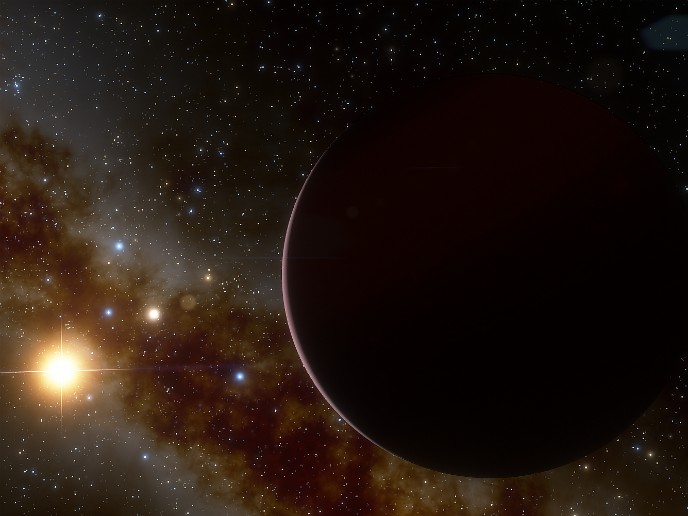Trending Science: Giant planet discovered that shouldn’t even exist
According to the journal ‘Science’, a Spanish-led team of astronomers has unexpectedly discovered a Jupiter-like exoplanet dubbed GJ 5312b that’s orbiting a tiny red star located about 30 light years from Earth. Known as GJ 3512, the star is only a tenth as big as the sun, while the exoplanet is at least half the mass of Jupiter. Astronomers didn’t expect that such a tiny star would be able to host a gigantic planet. Was the scientific community’s understanding of how planets form wrong until now?
The curious case of a gas giant orbiting a small star
The research shows that the red dwarf exhibited some unusual behaviour because it moved at a faster rate than normal. This revealed that it had quite a big companion attached to it. The finding challenges the widely accepted idea of planet formation known as core accretion. It theorises that planets form from smaller particles that converge by the force of gravity, creating larger and larger particles into one massive body. The exoplanet was likely formed when an unstable disk around the tiny star split up into clumps. “Yes, an absolute surprise,” lead author and astrophysicist Juan Carlos Morales of the Institute for Space Studies of Catalonia at the Institute of Space Sciences in Spain told ‘Reuters’. “The discovery was surprising because theoretical formation models suggest that low-mass stars typically host small planets, similar to Earth or small Neptunes. In this case, we have found a gas giant planet similar to Jupiter around a very small star.” “They emit less energy, so they are fainter than the sun, and their surface temperature is rather cool, below 3800 (degrees) Kelvin (6,380 degrees Fahrenheit/3,527 Celsius) approximately. This is why they have a reddish color,” Dr Morales commented when explaining red dwarfs.
Questioning conventional wisdom about how planets are born
“Around such stars there should only be planets the size of the Earth or somewhat more massive Super-Earths,” co-author Christoph Mordasini, a professor at Switzerland’s University of Bern told the ‘BBC’. “GJ 3512b, however, is a giant planet with a mass about half as big as the one of Jupiter, and thus at least one order of magnitude more massive than the planets predicted by theoretical models for such [a] small star.” Co-author Hubert Klahr from Germany’s Max Planck Institute for Astronomy said: “Until now, the only planets whose formation was compatible with disc instabilities were a handful of young, hot and very massive planets far away from their host stars." Dr Klahr added: “With GJ 3512b, we now have an extraordinary candidate for a planet that could have emerged from the instability of a disc around a star with very little mass. This find prompts us to review our models.” The astronomers will continue to monitor signals because there’s evidence that a second planet might be orbiting this very tiny star. They are also surveying about 300 other dwarf stars, hoping for more surprising odd pairs.
Countries
United States



